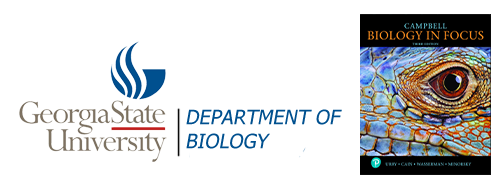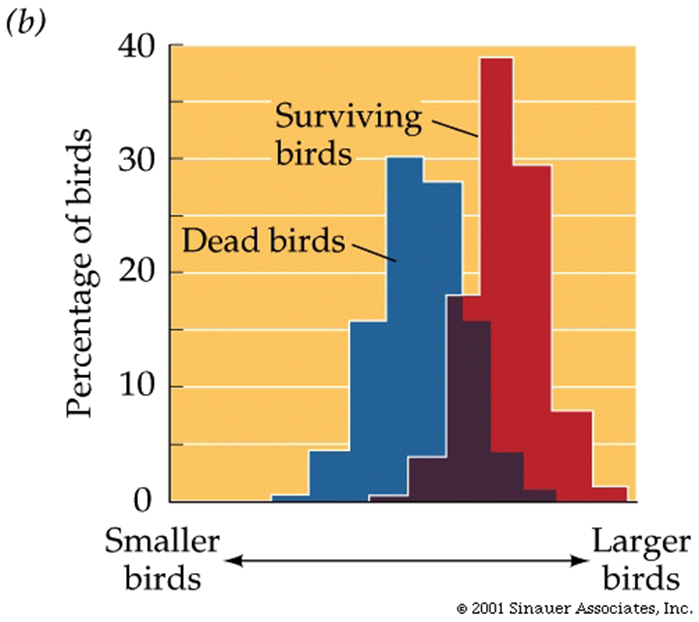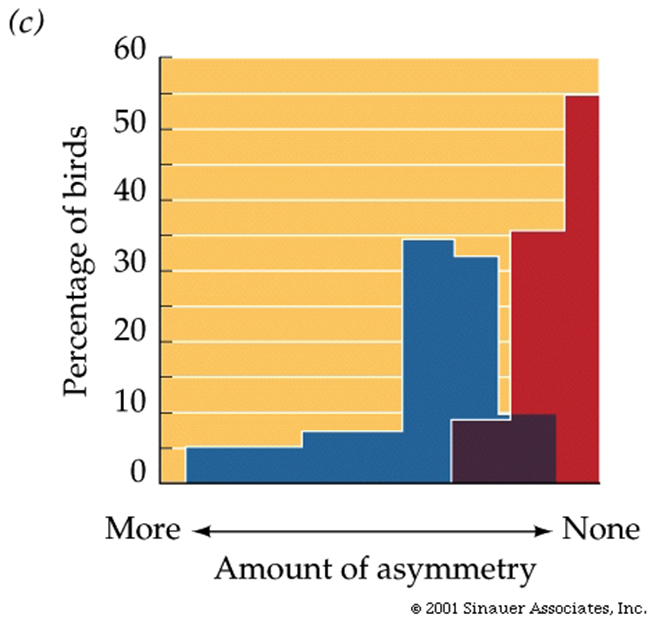- Home
Welcome !
Welcome to john houghton's home page for his biology courses. This site is designed as a hub for curating and sharing lectures, course syllabi, assignments, and links to relevant resources. Use the menu bar at the top of the screen to navigate through the site.
(Please note: this page is currently under construction.)

- BIOL 2107
Fall '22 CRN87989
Lectures: (1)
- Courses
- Resources
General Resources

Tectonic Plates -over geological time -MOVIE
In the last lecture we ended up talking about the Null Hypothesis and how it allows for "proof by contradiction" refuting the negative notion that humming birds spend the same amount of time around flowers with colour... and in so doing (potentially opening up for the possibility -however small- that if "colour" is important, may be the there might be some greater differences with different colours....
While all this sounds very mundane and more than a little tedious, it does provide the very foundation of our Scientific Approach, and allows for an "objective" validation of any querky notion that we can come up with.
“The whole of science is nothing more than a refinement of everyday thinking.”
- Albert Einstein
...How we refine our everyday thinking, however, is fundamentally based upon the questions we ask, and how we go about finding the answers to those questions
One of the potential problems, however, with Science or any discipline that is based upon "observations", is whether or not the observation(s) that can be made today actually APPLIES to the situation or question(s) being addressed. Barry Bonds vs. Hank Aaron vs. Babe Ruth.
Indeed, it can be critical when addressing such a scientific question. that you know what question is being asked, and that you are asking it in the right manner... Nobel Prize in Chemistry 1989
It is also critical that -in an "ideal world" - valid scientific questions are unencumbered by fluctuating social mores, and potential missinterpretation that result: as exemplified by Copernicus (1530's); Galileo (early 1600's)... More recently un-scientific interventions of lecture/classes/text books in Science that try to downlplay or minimize Scientiifc discourse offer more closer to home examples, such as Cobb County school board (early 21st century)...
Of course... there are (and should be) social limits (?)... human cloning??.
The Bush administration's moritorum (back in 2000) on the use of placental tissue and already destroyed human embryos to provide STEM cells for STEM cell research is potentially more of interest to open bioethical discussion....
Aristotelian based logic along with Scientific Method are a POWERFUL combination...
So, having addressed various smaller questions using the Scientific Methodology....let's try to tackle some of the potentially more grandiose questions that might be thrown our way.
How Do We Know? Can we still apply "observational principles" in the current universe to address such lofty issues that -by definition- must have occurred before anyone was able to make any observations.
The answer is apparently, Yes.
The Luminosity of "old" star clusters changes, radioactive dating of old stars (the element Thorium decays with a half life of 14.05 Gyr) as well as the presence of "white dwarfs".
Can we now apply such observationally based Scientific methodology to questions, concerning our own earth, and may be even apply such methodologies to questions about Life itself, and or where do we (did we) come from?
Well, geologists and paleantologists would claim the answer to that would again be a resounding YES!
Earth’s geological history is divided into eras and periods. The boundaries between these rather large units of time are based on differences between geological changes... their fossil biotas. Review: geological changes and biotic changes
As one of the previous fires shows, the Earth’s early atmosphere lacked free oxygen, and was predominantly made up of, carbon dioxide (CO2), methane (CH4), carbon monoxide (CO), ammonia (NH3), free hydrogen and water vapor. Oxygen came along, apparently as a bi-product, and accumulated in relative abundance AFTER (or as a result of?) simple life forms (prokaryotes?) evolved the ability to use WATER as a source of hydrogen ions, in photosynthesis. Increasing atmospheric oxygen subsequently allowed the further biological development of these prokaryotes. Thereafter, the increasing oxygen in the environment potentiated the evolution (development) of a somewhat distinctive branch of living organisms -the eukaryotes ?- and the potential for multicellular organismal existence. Review: Temporal view of living organisms
Physical changes that have aparently occurred on and in the Earth over these times, have also included a gradual cooling and weakening of the forces that caused the immense,and -as we shall see- continental drifts that occured, as we shall see have been quite significant continental drifts.
Throughout Earth’s history, they would suggest, the continents have shifted, sometimes separating, at other times colliding.

Rapid climate changes, massive volcanic activity , and major shifts in sea levels and ocean currents have all had dramatic effects upon the evolution of life on Earth. Review Sea level changes, Temperature Changes
In addition, over its life time, the earth has been subject to a number of "significant" external events, such as meteorite collisions and indirect interactions with comets , which have also changed climatic conditions -changing the potential for life to exist on the earth.
There is a considerable body of evidence to suggest that a meteorite may have been at least partially the cause of the somewhat abrupt mass extinction at the end of the Cretaceous period.. or alternatively...Volcanoes in the Deccan Traps... Even so, there are though to be at least 5 different major mass extinctions in the life of this planet
The ages of rock layers in Earth’s crust can be determined from their position -relative to one another and the presence of somewhat novel metals such as iridium and other radioactive element. more rocks.
Much of what we know about the history of life on Earth comes from the study of fossils embedded in the ages of rock layers in the Earth’s whose age crust can be determined from their position -relative to one another and the presence of somewhat novel metals such as iridium and other radioactive elements. more rocks.
As with the universe, radioisotopeshave supplied the key for assigning absolute ages to rocks, giving rise to our perspective on "Relative Time", Thus, changes in geological time can be related to the metronomic (or consistent) isotopic changes in the environment.
32P 14.3 days, 3H 12.3 years, 192Ir 73.83 days 14C 5,700 years and 40K 1.3 billion years
The fossil record, although only partially complete (little more than 300,000 fossil species have yet been described), reveals broad patterns in the evolution of life.
Fossils records show that many evolutionary changes are also gradual (in geological time). While these changes do explain some of the changes that have occurred through geological time, they also demonstrate that an incomplete record -in a similar way to faulty reasoning (such as circular arguments or the use of "invalid probes") can sometimes falsely suggest or even conceal times of rapid change, or completely redirect potential heritable linkages.



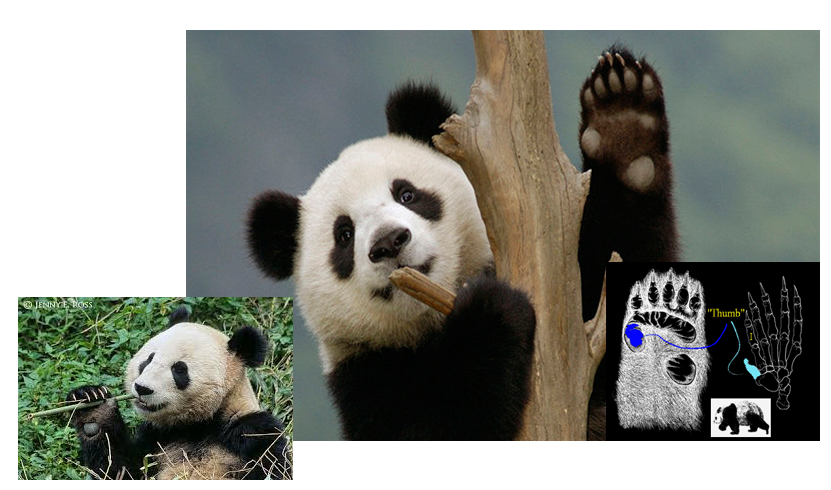
But we are getting a little ahead of ourselves....
In the early to mid 19th century, at about the same time that a researcher called Sir Charles Lyell was appreciating the idea that the age of fossils somehow related to the age of the rocks in which they were found......
Darwin began his "Voyage of the Beagle" (1831)
and his first opus: The Origin of Species 1859, and the crucial determination.....
As a result of his travels, Darwin developed his idea of "evolution by natural selection" by carefully observing nature, especially during his voyage around the world, and comimg up with a rationale for how he understood that these variations could exist..
He based his theory (little "t")on well-known facts and some key inferences. Obviously, he had no examples of the action of natural selection, so he based his arguments on his current knowledge of artificial selection by plant and animal breeders of the day.
Modern Genetics has since elucidated the mechanisms of heredity, which have provided a solid base that supports and substantiates (to a large extent) Darwin’s theory. These findings, along with others over the subsequent years, began to change the "t" into a "T".
In essence, Darwin looked at various traits of the wild life that he observed, both in South America and on the islands. He noted, similarities and differences, and wrestled with the ideas of how these similarities came about. He understood, the importance of potentially "informative", shared traits, and how an appreciation of changes in these traits can lead toward distinctions and similarities.
... and how these traits change can also be highly informative.
Natural selection, which is the variation of heritable traits that can determine the success of the "reproductive efforts" of animals (life foms) within a given population and can lead to changes in the Genetic makeup or "gene pool" of populations.
The book mentions three distinct types of "selective mechanisms"and uses uses the colouration of lizards against a changing background to distinguish among the three fundamentally different types of selective pressure....resulting in Stabilizing, Directional, and Disruptive effects upon phenotypes. Of course there are many examples of other simliar selective pressures.
Directional selection: cliff swallows in Nebraska, which depend on insects for their livelihood. Severe cold snaps give (as occurred in May 1996), totally devastated the population, killing up to 2,000 birds (presumably through lack of food). When scientists analyzed all the dead birds, they determined that birds with a small wing span (less SA to Vol ratio) and assymetrical wing shapes (less manouverability) were disproportionately represented in the dead birds.
Disruptive selection: can be seen in the "black-bellied seed cracking finches of West Africa, wherein the selective pressure of obtaining food, has effectively divided the population into two, quite distinctive distributions, based upon their bill type.
Both types of examples show different types of natural selective pressures that utlimately effect the resulting populationa.
All similarities and differences within and among different types of animals, therefore, when taken together, can provide a series of "near" and "distant" relationships......family trees.
A good source of information and potential answers to a variety of questions concerning the inter relationships of animals, plants etc. and their shared evolutionary history can be found at this URL:
Some of the traits that are shared among animals and plants of various species can be considered to be "informative" in that they can be used as exceptionally reliable evidence that allows evolutionary scientists to deduce (infer!!) heritable relationships and potentially build ancestries for animals that may otherwise not be fully understood.
(MOVIE) Whale evolution.....from wolves?
and (MOVIE) Lucy .......
Three important thoughts that I would like to stress from having reviewed the movies.
a) Evolutionary change in whales is not like the Tarzan movie at the end of the 90's.....
b) The use of "shared ancestries".... It is important that we understand that, according to the fossil records whales have probably descended from a "wolf-like" animal NOT from a "wolf". Likewise "Lucy" is not an "ape" but an "ape-like hominid".
b) That the inference of bone configurations of modern (latter-day) analogues -allowing for adaptation over time- reeally can be used to relate the development of known organisms.
Ideally all of these ideas of change(s) reflect back upon Darwin's appreciation of the inhabitants of the Galapagos islands, and the finding that there are forces at work which affect "if" and "how" different animals/plants in a given population are able to survive.
Of course all this evidence pre-supposes "honesty" among scientists......which is not always the case, either as a consequence of being unable to interpret the data correctly, or even as a consequence of outright fraud.
What is also important to note... even a superficial understanding of these concepts allows us to appreciate that the primary forces of evolutionary change or exert themselves, not on individual organisms, but on populations of related individuals.
Also implicit within this, and any understanding of evolution is that this "population of individuals" is not a number of identical clones, but a group of individuals that exhibit similar phenotypic traits (the operative word being "similar"), and that each individual has a slightly different organismal "signature" to donate to the collective "gene pool".
To put Darwin's ideas in a 21st century context with a little more clarity (gained from almost 190 years of hind-site), let's define some of the vocabulary that we might use to more readily understand some of the ramifications (consequences) of Darwin's ideas.
To put Darwin's ideas in a 21st centtury context with a little more clarity (gained from almost 190 years of hind-site), let's define some of the vocabulary that we might use to more readily understand some of the ramifications (consequences) of Darwin's ideas.
- population: all individuals of the same species occupying the same area.
- gene:unit of heritable information -usually associated (at the molecular level) with a specific region located on the chromosome.
- allele: - one of two or more slightly different forms, or "variants" of a given gene.
- genotype: a selection of the genes that make up an individual.
- phenotype: the consequence(s) of all the allelic interactions that give rise to a visibly determinable "type".
- gene pool: all the genotypes within a population.
- allelic frequency: the frequency in which an allele shows itself in a given population or gene pool.
From and understanding of a few of these fundamental concepts we can then build a greater undrstanding of more complex evolutionary terms, such as-
Genetic drift: a random change in allelic frequency over time and appreciate this as being a key mechanism of evolutionary change.
As a result, the effects of genetic drift might be strongest in small populations (?)
Why would that be (?) -the fewer individuals in the population, the more likely it is that random fluctuations will completely disrupt the allelic frequency.
In the short term (i.e over a few generations), one might expect allelic frequencies to increase and decrease in a random, unpredictable way, as a result of genetic drift .
Consider a newly introduced allele within a population. The presence of this allele will have an allelic frequency that can change over time. At some stage, perhaps, the frequency of a particular allelewould become fixed in a population or lost from a population for one reason or another, but this need not happen -especially in large populations.
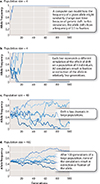
If these traits are selected for (or against) the rate at which these allelic traits become more fixed (or lost) within a population is increased. Again, changes in the number of individuals within a population that carry any particular allelefor a given trait is more likely to be affected in a small population than it is in a large population.
In the longer term, the major consequences of genetic drift lead to a homogenization of phenotypes within a population (everyone starts to look alike), especailly if there is some external selective pressure as certain alleles (read "variations") will be lost as others become "fixed". Thus, genetic drift gives rise to a loss of variation in the gene pool (genetic variation).
Now couple genetic drift with Darwin' s idea of "natural selection".... and you can begin to see how the effects of inherent populational changes (along with environmental conditions) can begin to alter the allelic frequency within different populations over time....
 ;
; 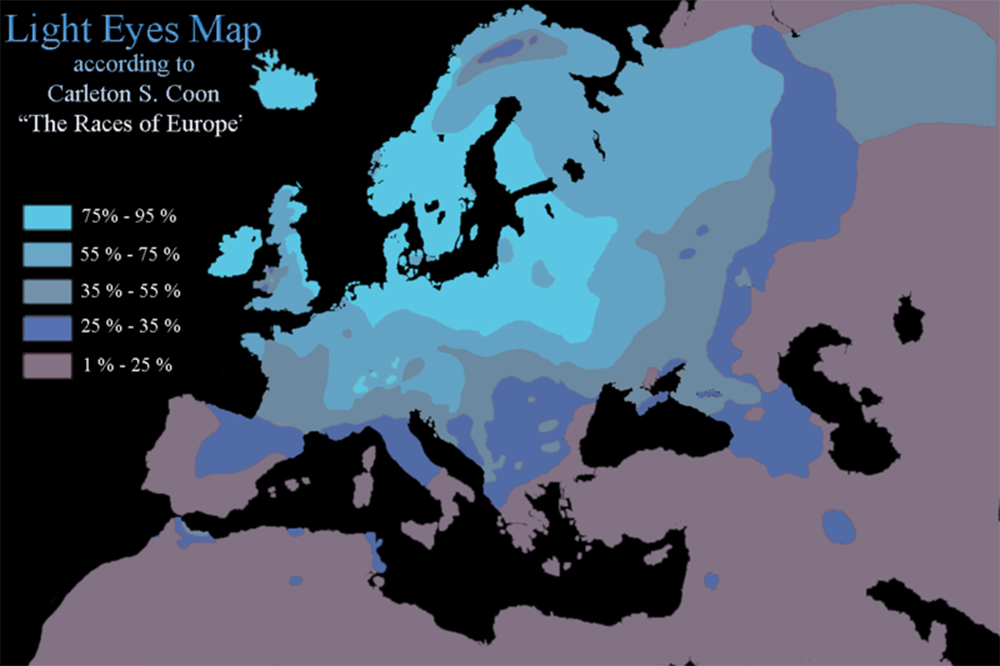 .
.On the other hand, Gene flow(?) would tend to INCREASE genetic variation within a given population.
Gene flow is the intermingling of separate traits among similar populations. This increase occurs because individuals from other populations will bring in alleles that would otherwise be absent or rare (may be even lost) from the population that is being observed. In other words they would add variety to the gene pool.
Note that the effect of gene flow on genetic variation within a population is the opposite of the effect of genetic drift.
In the short term (i.e over a few generations), one might expect allelic frequenciesto increase and decrease in a random, unpredictable way, as a result of genetic drift
As we ave just discussed, however, in the longer term, the major consequences of genetic drift lead to a homogenization of phenotypes with in a population.
On the other hand, gene flow(?) would tend to increase genetic variation within a given population.
Quick question. How might you think honey bees contribute to the gene flow among assorted pollenating flowers?
In coining the word and idea of "natural selection" Darwin was able to provide a potential mechanism by which different phenotypic traits changed (and how they continue to change), an understanding of which, can be highly informative.
In modern terms
Natural Selection can be understood to be:
"the gradual process by which heritable biological traits become either more or less common in a population as a function of the effect of inherited traits on the differential reproductive success of organisms interacting with their environment".
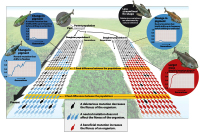
There are also classic examples of other more severe "external" factors that can have significant effects upon the makeup of any gene pool.

- bottleneck: severe reduction in population size due to intense selective pressure or a natural calamity or catastrophe, which alters the allele frequency...
As I was talking about in the last lecture.... over the life time of the earth there have been a number of "significant" events, such as meteorite collisions and indirect interactions with comets , which have had a cataclismic affect / change on climatic conditions -changing the potential for life to exist on the earth.
There is a considerable body of evidence to suggest that a meteorite may have been at least partially the cause of the somewhat abrupt mass extinction at the end of the Cretaceous period.. or alternatively...Volcanoes in the Deccan Traps
Are there Human bottlenecks??

- founder effect: whereby a couple or even a single organism becomes "dislodged" from a population, and all genetic variation is limited to the individual or isolated individuals.
Now, armed with all this "new" information (and vocabulary(?)), let's return to Darwin and some of his rather absurd notions that he wrote about in in his first book The Origin of Species, and let's ask a few questions .........
Given what we have determined, might the "forces of evolution" work equally well on populations that have a limited gene pool, as they do in those populations with a much larger -effectively infinite variety of alleles within a its gene pool? (YES / NO..... ?)
This would explain the potential changes in the frequency of phenotypic changes (due to genetic drift) in animals / finches / tortoises that Darwin noticed on or in the Galapagos islands vs. similar changes (or a lack thereof) in their main land relatives, Remember, Darwin sailed around the world, saw a great deal of flora and fauna, but it was the Galapagos islands that provide the important location for his idea of natural selection.
Really, all Darwin observed were phenotypic "variations of different shared phenotypes"
Question: Are there any constraints to evolutionary changes?
Answer: Yes.
At this stage, however, the scientific method and our understanding of these "constraints" upon evolutionary change can get bogged down in details.......
-------
Remember, implicit within this understanding of evolution is that population works on populations of "individuals" -each contributing a slightly different genotypic "signature" to the population's gene pool.
How did we get such a diverse gene pool?
Unfortunately, that question we will have to leave for another day -once we have dealt with Genetics and Mendal and his findings.
For now, I would like to ask how do we now adapt Darwin's evolutionary principles and begin to determine that there are sufficient differences between populations with "similar, but different, genetic makeup", and assign to each a different name,.....
....In essence how do we determine -and then justify- the term SPECIES that Darwin uses in his book, The Origin of Species, ?
Darwin and his contempories used appearance(s) (phenotype[s]) of animals/plants to define differences......often to distinguish one species from another, or (at the very least) recognize members of the same species present in different geographical locations.

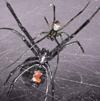

About Quick Facts Academics |
Admissions Undergraduate Research |
Libraries University Library Campus Life
Housing |
Athletics Alumni
|
 |
